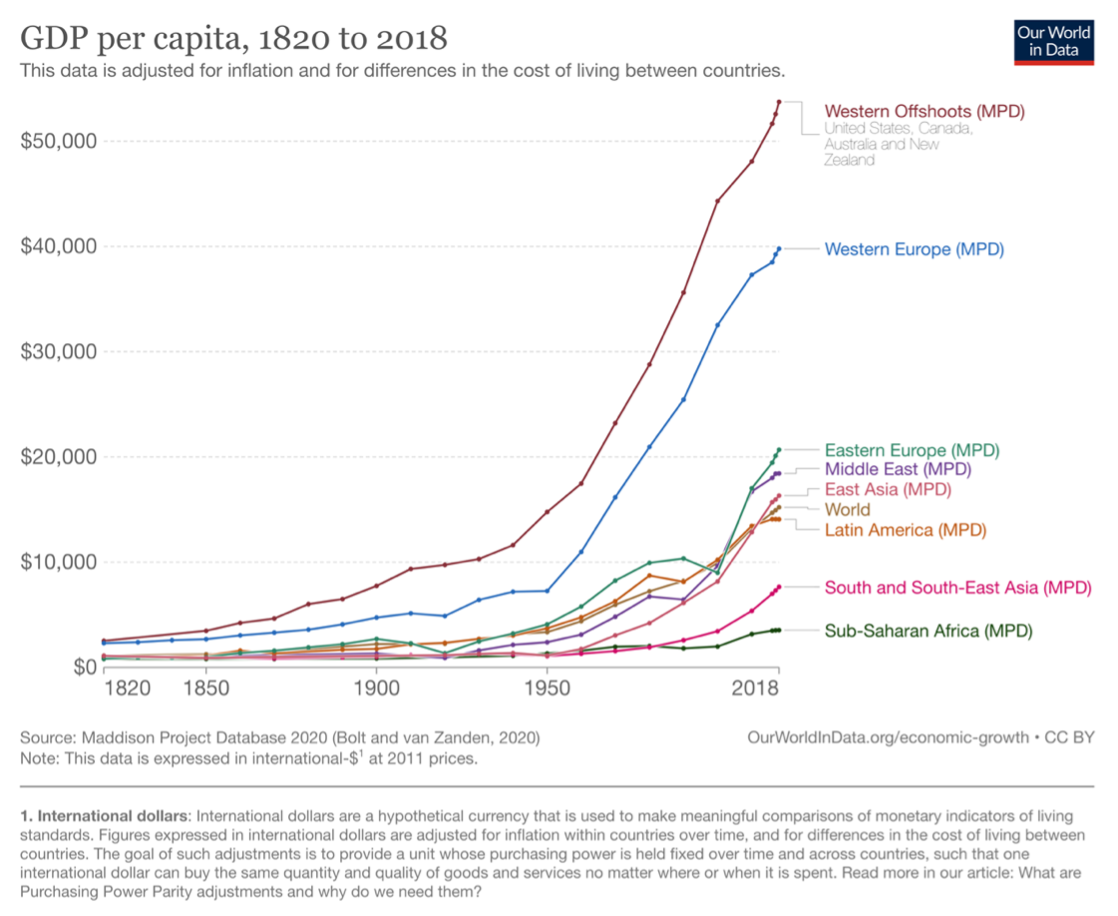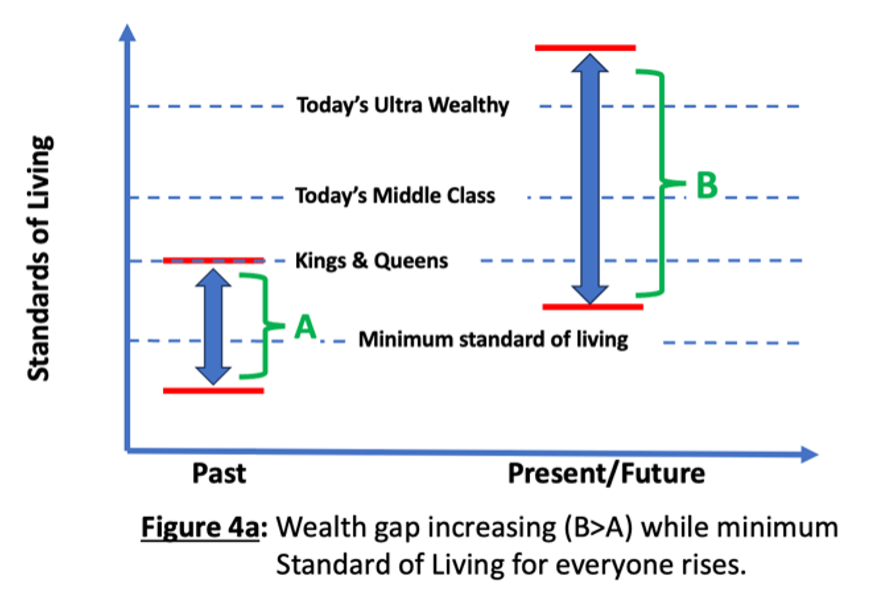by Peter Diamandis: Let’s talk about the “rich-poor divide.”
 While it’s real (and growing), what does it really mean during a coming Age of Abundance?
While it’s real (and growing), what does it really mean during a coming Age of Abundance?
What does it mean when the poorest in the world have access to tech and services that were once only available to the wealthiest people and the heads of nations? What happens when demonetized and democratized exponential technologies are able to uplift all of humanity?
Let’s dive in…
The Growing Rich-Poor Divide
Throughout most of human history, the disparity between the wealthy elite and the working masses has been extreme.
The division has manifested itself in various forms across different cultures and eras. Typically, at the top of the hillside reigned the Kings, Pharaohs, Emperors, and Lords in their castles, in sharp contrast to the 99% of their subjects, slaves or serfs who toiled night and day to survive and support the aristocracies.
For example, in the Roman Empire, slavery played a central role in society. An estimated 40% of the population in Italy were slaves, living under harsh conditions, and serving the wealthy elite.
Centuries later in Medieval Europe, rampant inequality continued under the feudal system, where the Lords and nobility owned vast amounts of land and lived lavishly in castles, while the serfs were bound to the land, often working seven days a week. Research suggests that the serfs, who made up over 90% of the population, owned just 15% of the land.
And if we merely measure wealth (purchasing power of physical things), this disparity remains today and is even more striking if we look at income alone. The poorest half of the global population holds just 2% of the total wealth. Contrast this with the richest 10% of the global population, who possess a staggering 76% of all wealth. Considering this data alone, the divide looks shocking and hopeless.

But what these figures fail to demonstrate is just how much progress we’ve made in raising the average levels of income and wealth of people around the world, AND the extent to which technology has massively demonetized and democratized many basic services which are now available to nearly everyone at zero cost.
Let’s look first at increasing average levels of income and wealth. The below chart shows the growth of global GDP per capita since the early 19th century.
One effect of this growth has been the rise of a global middle class, defined by the World Bank as those people living on $10 – $20 a day, or an annual income of $14,600 to $29,200 for a family of four. As of 2016, there were about 3.2 billion people who could be considered middle class, and estimates suggest that by 2030 that number could top 5.5 billion people.
Next, and perhaps most important, let’s consider the impact of exponential technologies on the poorest in the world, historically referred to as “the bottom billion”, which in Abundance, Steven Kotler and I renamed “the Rising Billion.”
These individuals, the poorest of the poor, have increasingly been empowered and plugged into the global economy through their mobile phones. In 2023, including both smart and feature phones, the current number of mobile phone users is 7.33 billion, which makes 91.04% of people in the world cell phone owners.
Such mobile connectivity provides access to resources that are not accounted for in traditional measures of wealth. Access to a multitude of free products and services that others in decades past would have had to pay a significant percentage of their wealth to access. Having a mobile phone means access to free information, educational resources, digital markets, entertainment, new income streams, digital tools such as cameras, video, books, music, social networks, and even free access to artificial intelligence.
As we’ll see in later blogs, the positive impact of exponential technologies goes way beyond just the added utilities of mobile telephony and apps. Other technologies are within striking distance of ultimately providing 8 billion people with clean water, nutritious food, affordable housing, personalized education, top-tier medical care, and nonpolluting, ubiquitous energy.
Putting this into perspective, it’s important to realize that the vast majority of humanity today has access to a higher standard of living than the kings and queens of centuries past as measured by their access to such things as food, water, energy, healthcare, education, knowledge, entertainment, compute, and communications.

Figure 4a above demonstrates an alternative way of viewing the widening rich-pool wealth gap. At the same time that the overall size of the gap is increasing (B > A), the reality is that technology is raising the minimum standards of living for all of humanity.
Put another way, while the wealthy are getting wealthier, and eventually we will see “trillionaires” living on their space stations or on the Martian surface, technology is also raising the floor—the minimum standard of living—for every man, woman, and child.
Why This Matters
The goal of abundance thinking, and the objective of the work done by organizations such as the XPRIZE Foundation and Singularity University, is to enable a world where every child on the planet has access to all the food, water, shelter, healthcare, and education they desire.
Ultimately creating a world measured on possibility rather than luxury.
This is the world that exponential technologies make possible. In upcoming blogs, we’ll begin our exploration of Metatrends, which will revolutionize industries, redefine tomorrow’s generation of businesses, and transform our lives from the bottom up.




















































